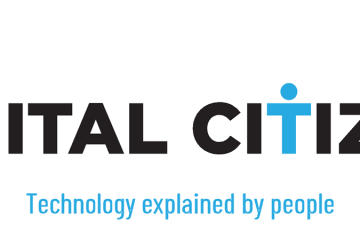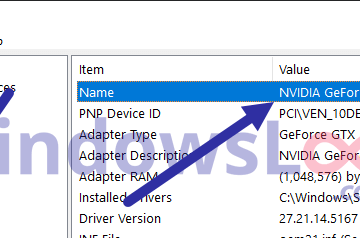Google on Tuesday, May 6, 2025, announced a new suite of features called “AI Max for Search campaigns,”designed to integrate its latest artificial intelligence capabilities more deeply into how businesses manage and optimize their search advertising.
The initiative, presented as a one-click upgrade within existing Search campaign settings rather than an entirely new campaign type, aims to refine how advertisers connect with potential customers by moving beyond simple keyword samsvarer med å forutse brukerens intensjon. The global beta for AI Max is slated to begin later this month, with wider availability for all advertisers anticipated by early Q3 2025.
At its core, AI Max seeks to expand Annonsørenes rekkevidde og forbedrer annonse relevans. En av hovedkomponentene,” Søkterminsmatching ,”bruker brede match-kapasiteter og nøkkelordløs teknologi.

This system learns from an advertiser’s current keywords, ad creatives, and website URLs to identify and target a broader spectrum of pertinent, high-intent search queries—even those not Eksplisitt en del av annonsørens søkeordliste. Google indicated its AI would learn from current keywords, creative assets, and URLs to help advertisers show up on more relevant searches.
According to the official Google announcement, “The way your keywords and keywordless matches are prioritized in serving works the same as it does today in Search and Performance Max campaigns.”
Automated Creatives and New Advertiser Controls
Complementing this expanded reach is “text customization,”an evolution of the feature previously known as “automatically created assets.”Integrated into an “asset optimization”panel, this tool uses Google’s AI, including its Gemini models, to generate new ad copy such as headlines and descriptions.
These suggestions are derived from an advertiser’s landing page content, existing ads, and keywords. Google claims this feature has improved capabilities for crafting clear calls-to-action and highlighting unique selling points.
However these AI-generated assets will go live before advertisers have a chance to review them, demanding quick monitoring and reaction from campaign managers. This feature is paired with “final URL expansion,”designed to direct users to the most suitable pages on an advertiser’s website.
AI Max also introduces new layers of control.”Steder av interesse”gir mulighet for målretting av annonsegruppenivå basert på brukernes geografiske hensikt. “Brand controls,”applicable at both campaign and ad group levels, give advertisers the ability to specify brands they wish their ads to be associated with or, conversely, to prevent their ads from appearing alongside particular brands.
Advertisers will also have the option to remove any generated assets with “asset removals”or specify where they’d like to send their customers with URL controls. While Google recommends using all AI Max features together for optimal results, advertisers will have options to opt out of text customization or final URL expansion at the campaign level, and search term matching at the ad group level.
The konsept bak at max har vært i å teste tidligere under et navn”Search Max,” som også fokusert på å ha vært i å teste på en eller annen bransjene som er ute etter å ha tester med å teste tidligere. at the time that increased automation might come with reduced direct control for advertisers.
Early Performance Indicators and Reporting Enhancements
Google says its internal data from 2025 suggests that campaigns activating AI Max typically see a 14% increase in conversions or conversion value at a similar cost-per-acquisition (CPA) or return-on-ad-spend (ROAS).
Dette tallet stiger angivelig til 27% for kampanjer som er sterkt avhengige av eksakte og setninger samsvarer nøkkelord. De første resultatene fra tidlige testere er delt. L’Oréal, the global beauty company, reportedly saw a twofold higher conversion rate and a 31% lower cost-per-conversion.
Nicolás Moya, CMO at L’Oréal Chile, stated, “AI Max not only allowed us to pioneer the use of AI in Search — it also propelled us into new markets, reaching untapped audiences with lower costs, higher conversions and more relevant ad experiences that significantly boosted engagement.”
Similarly, MyConnect, an Australian utility connection service, reportedly saw 16% more leads at a 13% lower CPA, with a 30% increase in conversions from previously unreached queries. Bec Oxnam, Head of Marketing at MyConnect, commented, “With the AI-powered creative and targeting enhancements in AI Max for Search campaigns, we were able to drive incremental high-quality leads by unlocking net-new searches and having AI build more relevant content to each user and their query.”
To address advertiser calls for more transparency, AI Max will be accompanied by reporting enhancements. A new URL parameter is being introduced to offer greater visibility into search terms across all match types.
Forthcoming updates to Search and Performance Max reporting will include headlines and URLs in search terms reports. The Search Terms Report will also feature “AI Max”as a new match type and a source column indicating whether a match originated from broad match expansion or keywordless matching, along with a combined view of search term, headlines, and URLs.
The Keywords report summary will incorporate “AI Max”contributions. Furthermore, the Landing pages report will gain a “Selected by”column for AI Max-chosen landing pages, and the Asset report will detail the performance of AI Max assets.
These changes align with Google’s April 30 announcement regarding
The introduction of AI Max is part of Google’s broader strategy to embed AI more deeply inn i sine produkter. This follows the rollout of ads within its AI Overviews in October 2024 and the recent expansion of its experimental AI Mode in Search to all US users over 18, an interface designed for more complex conversational queries. Brian Burdick, Google’s senior director of Search ad automation, stated to adweek At AI Max er”å bringe det beste for å”gjøre det mulig å gjøre det mulig for å gjøre det mulig for å gjøre det mulig for å gjøre det mulig å gjøre det mulig å gjøre det mulig å gjøre det mulig å gjøre det mulig å gjøre det mulig for å gjøre det mulig for å gjøre det mulig for å gjøre det mulig for å gjøre det mulig for å gjøre det mulig for å gjøre det mulig for å gjøre det mulig for å gjøre det mulig for å gjøre det mulig for å gjøre det mulig for å gjøre det mulig for å gjøre det mulig for å gjøre det mulig for å gjøre det mulig for å gjøre det mulig for å gjøre det mulig for å gjøre det mulig for å gjøre det mulig for å gjøre det mulig for å gjøre det mulig for å gjøre det mulig for å gjøre det mulig for å gjøre det mulig for Creative og Query matching til. to turn it on, turn it off, try it…with minimum disruption to their ongoing operations, reporting, et cetera.” Rachel Melgaard, Google’s director of global Search Ads, added that these advancements show Google’s shift toward “more nuanced and complex question-answering,”noting that the technology is “getting to a point where we can predict a little bit more of what that particular user might be interested in next.” AI Max for søksannonsering ankommer da andre tech-giganter, spesielt Meta, også forfølger AI-drevet reklameautomatisering. On May 2, reports detailed Meta CEO Mark Zuckerberg’s vision for AI to eventually automate the entire advertising process on its platforms. This was discussed alongside the preview rollout of Meta’s Llama API, with Zuckerberg envisioning a future where businesses simply state their objectives and connect their bank accounts, letting AI handle creative development, targeting, and measurement. However, this concept was met with skepticism from advertising industry executives, who raised concerns about brand safety and the trustworthiness of Meta’s self-reported performance data, especially given past issues such as budget overspending problems linked to Meta’s Advantage+ automated ad system earlier in 2024. Simultaneously, Google faces substantial regulatory challenges. U.S. Department of Justice (DOJ) forfølger aktivt en antitrust-sak rettet mot Googles annonseteknologiske stabel. Etter en kjennelse fra den amerikanske distriktsdommeren Leonie M. Brinkema som fant Google ulovlig monopolisert forlagsannonseserver og annonseutvekslingsmarkeder, ba DOJ formelt 5. mai om at domstolen påordner Google å selge disse nøkkeloperasjonene, inkludert ADX-annonseutvekslingen og deler av DFP-utgiverenes annonseserver. Regjeringens foreslåtte middel inkluderer fullstendig salg av ADX og en faset avhending av DFP. DOJ lawyer Julia Tarver Wood argued at the May 2 hearing, “To leave Google with ‘90 percent of publishers beholden to them is, frankly, too dangerous.” Google has strongly contested these proposed measures. Lee-Anne Mulholland, Google VP for regulatoriske anliggender, uttalte:”DOJs ytterligere forslag for å tvinge en avhending av våre annonsetekniske verktøy går langt utover domstolens funn, har ikke noe grunnlag i lov og vil skade utgivere og annonsører.”A remedies trial for this ad tech case is scheduled for September 22, 2025. This is separate from another ongoing DOJ antitrust case focused on Google’s search market dominance, where the potential sale of the Chrome browser has been suggested as a remedy. Google-annonseringsledere nektet å kommentere hvordan disse antitrustkampene kan påvirke selskapets AI-utvikling i søk, selv om a companals fra å blogge fra 2025/that”-public/public/policy/doj-seargen-are both unnecessary and harmful.” Google plans to share further updates on AI Max for Search campaigns and other advertising innovations at its
Navigating a Shifting AI and Regulatory Environment

